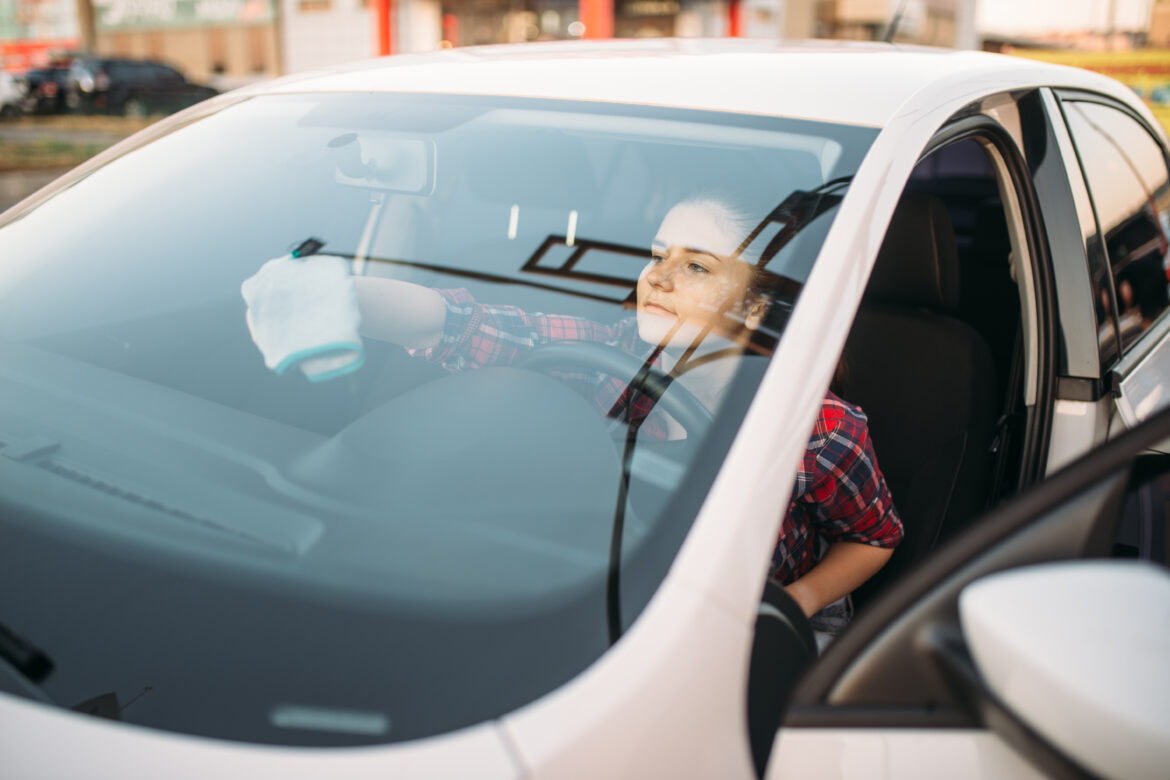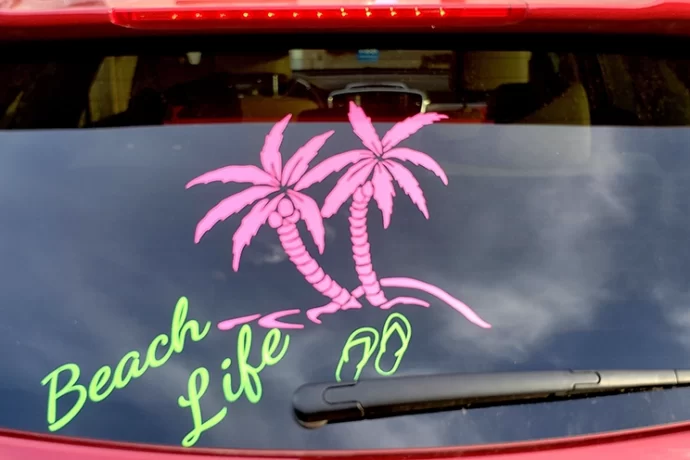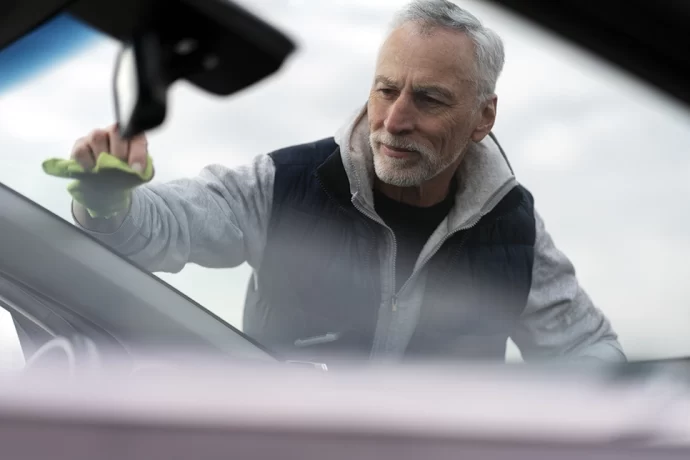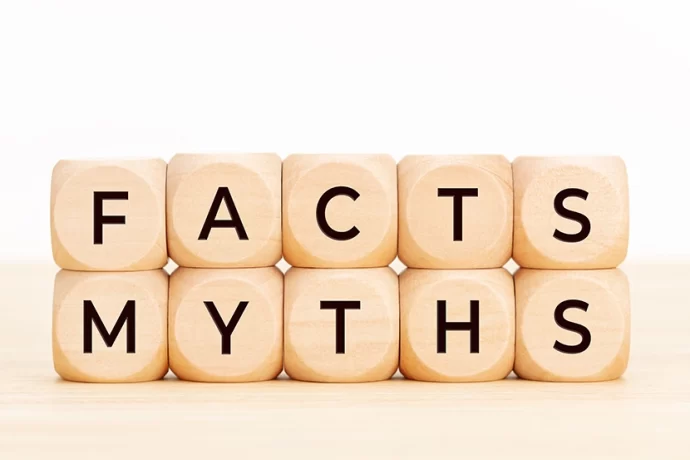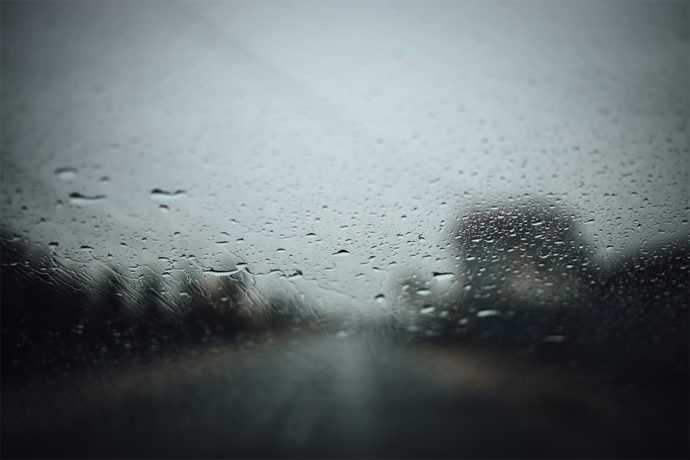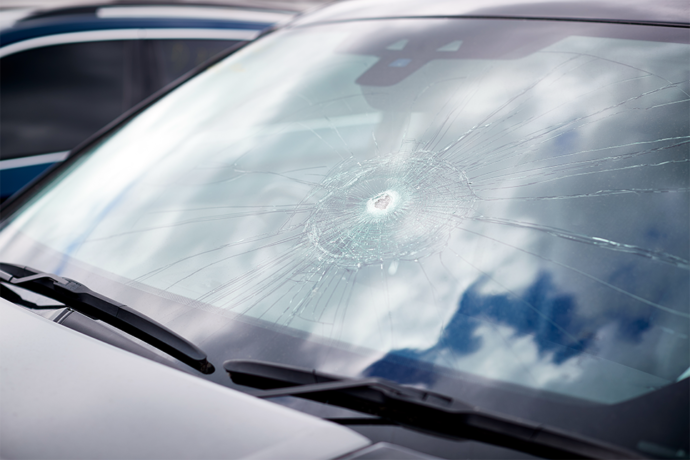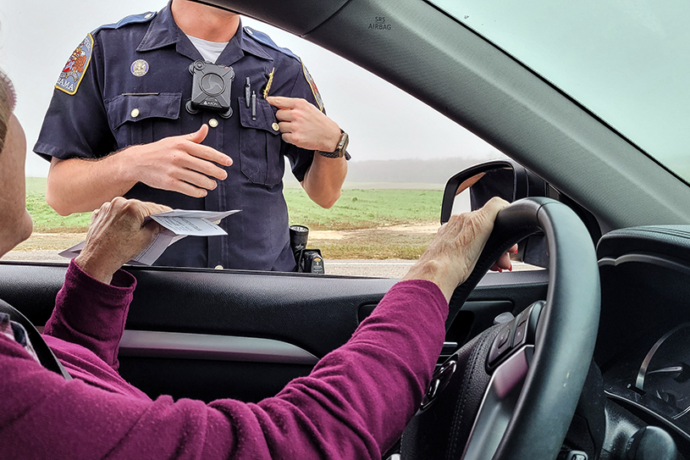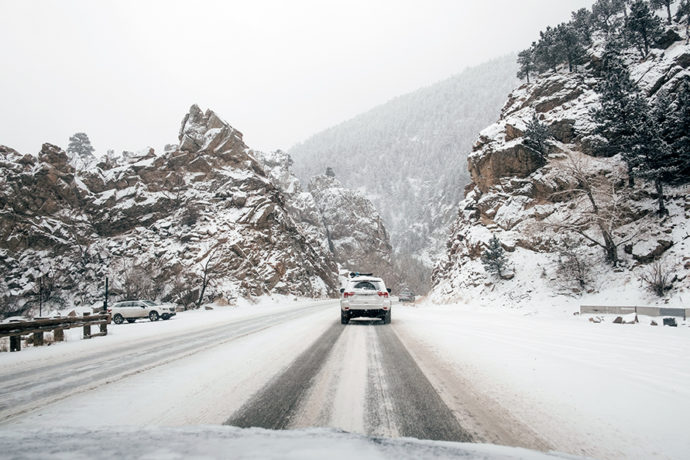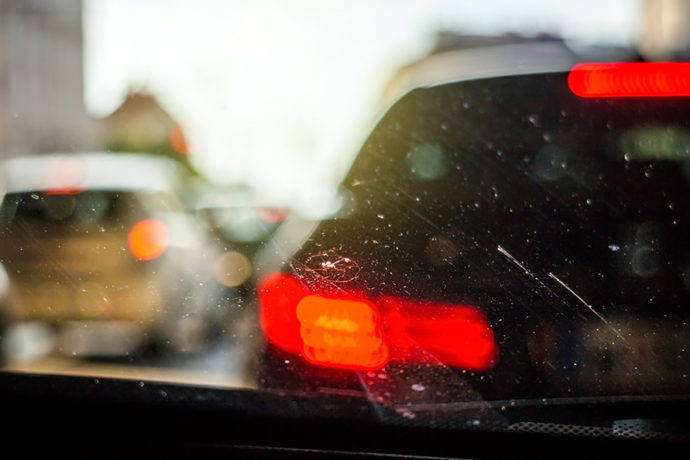Removing water spots on car windows can be an annoying problem many drivers face. Those small mineral deposits that are left behind when water evaporates look unsightly and over time can even permanently damage your automobile glass if the buildup becomes too substantial.
Thankfully, removing water spots from your car’s windows doesn’t require expensive cleaners or constant trips through the car wash. Several easy methods utilize common household items to get rid of the residue plaguing your windshield and other glass surfaces. This article will walk through exactly what causes hard water spots on car windows, the problems they can cause, multiple techniques you can use to remove them, tips to prevent water blemishes in the first place, and when it might be best to call in a professional for assistance.
Whether your car’s windshield, side windows, rear window, or mirrors seem to attract those annoying water spots every time it rains or you run your car through the sprinkler system on accident, this guide will walk through the various methods and home remedies you can use yourself to return your car’s glass to a clean, clear, spot-free state.
What Causes Water Spots on Your Car’s Windows?
Before we dive into the various methods you can use to banish water spots, it’s helpful to understand exactly what’s causing them in the first place. After all, if you know what’s leading to the water spot buildup on your car’s glass, you can also take steps to prevent them from recurring as aggressively.
The main culprit behind water spot stains on windshields, side windows, rear windows, and mirrors is mineral residue. As water from various sources comes into contact with your car’s exterior and then evaporates, it leaves behind all those minerals that were dissolved in it. This evaporated mineral deposit is what causes the characteristic water spots and stains we’re so familiar with seeing.
Some of the main sources leading to water spots on car windows include:
• Hard water from water sprinkler systems
• Rainwater
• Water from car washes
The water sources listed above all contain trace amounts of minerals like calcium, magnesium, and silica. Although the concentration of these minerals like magnesium dissolved in the hard/soft water seems insignificant, when all that water evaporates from your car’s glass surfaces, they get left behind. Over time, this builds up causing those familiar water spots, and can even affect your painted surfaces and overall paint job.
Additionally, water tends to evaporate slower on glass than it does on other materials like metal or paint. This gives the inorganic material deposits even more time to be left behind as solids on the car windows as the water disappears.
Understanding the link between evaporated mineral-laden water sources and the water spots that plague your windshield and windows will help you prevent and treat them more effectively. Now let’s explore some of the problems water spots cause if left unchecked on your car’s glass surfaces.
The Issues Water Spots Cause for Your Car’s Glass
We’ve established that water spots form from mineral deposits being left behind when water evaporates off your car’s windshield, windows, mirrors and other glass surfaces. Besides being an eyesore that detracts from your vehicle’s aesthetic appearance, these pesky water stains can cause some additional problems if left untreated over longer periods.
Here’s a breakdown of some of the issues persistent water spots can create:
Obscured Vision
Over time as water spot residue accumulates on your windshield, it starts to hamper visibility more and more. This is especially dangerous while driving, as obscured vision can prevent you from seeing other vehicles, pedestrians, animals, and road hazards. It is the nature of lingering water spots to essentially create blindspots and areas of hazy vision that put you and others in danger.
Permanent Glass Etching
This is probably the worst potential consequence of leaving water spots unchecked. The residue left behind by evaporated water can start to bond to your glass at a molecular level on your car’s surface. As this buildup increases from additional unremoved water deposits, it can etch impressions into your windshield, windows, and mirrors. The nature of permanent pitting and erosion of the glass itself cannot be reversed, eventually requiring full windshield or window replacement.
Increased Contamination
Water spots left lingering on glass surfaces can also start attracting additional dirt, grime, dust, and other contaminants. Areas with existing water staining tend to hold onto a mixture of new particulates, tree sap, bird droppings, and other mess more aggressively than clean glass. This can lead to an increased need for cleaning, a wash, and surface degradation.
As you can see, besides being an unsightly nuisance, persistent water spots also jeopardize the visibility, glass integrity, and cleanliness of your vehicle. With so much to lose by neglecting the removal and treatment, let’s examine the various options you have to tackle this vexing issue effectively yourself.
Techniques to Remove Water Spots on Your Car’s Windows
Now that you know what’s causing those pesky water stains and the potential problems they present, let’s explore your options for safely removing them yourself and regaining clean, clean car windows. Several effective methods and remedies utilize common household items to dissolve, detach, and wipe away residue buildup and water spots from your windshield, side windows, and mirrors.
Vinegar or Lemon Juice Solution
One of the most widely used homemade cleaners for spots is a simple vinegar or lemon juice solution in a spray bottle. The mild acidity in distilled white vinegar and fresh lemon juice helps break down and dissolve inorganic deposits quite effectively.
Generously spray the affected glass areas with the mixture of equal parts vinegar and distilled water or lemon juice and distilled water directly and allow it to sit for several minutes on the surface.
After using the spray, follow up by wiping down the windows with a soft microfiber towel or coffee filter to avoid scratching the glass and to get rid of the spots.
For tougher buildup, add baking soda to the solution to form a paste then let the mixture sit on the surface for several minutes to several hours. Then, wipe it dry with a clean, soft cloth.
Clay Bar System
Detailing clay bars have also emerged as a popular method for removing bonded contaminants from car paint and glass. The clay works almost like an eraser, gently lifting away hardened water spots to unveil cleaner glass underneath when lubricated and rubbed repeatedly over the surface.
Use detailing spray as a lubricant and be sure to fully knead and fold the clay bar continually to expose fresh working edges to prevent pushing around residue rather than lifting it to get rid of the pesky water spots on the surface of the windshield.
Car Wash Usage
Some commercial car washes offer specialized water spot removal cycles in their programming. The wash typically involves spraying the vehicle with an augmented soap solution before the wash phase to rinse the car. The special chemical-infused soap is specifically designed to help break down inorganic material deposits from water contamination acting as a glass cleaner so that they can be rinsed away with clean water and without a remnant.
While not overly effective at removing severe water staining, car washes can help mitigate light spotting for those who frequently leave water spots by providing a much-needed wash and rinse.
Quick Wipe Downs
Preventing hard water spots from forming in the first place is the best approach when possible. After any exposure event that gets your vehicle wet – whether rain, sprinklers, hoses, or going through a car wash – take a few minutes to wipe down all glass surfaces with a towel. Quickly dry them with a clean microfiber towel to absorb residual water rather than allowing them to let it sit and air dry. This process will drastically cut down on opportunities for new water spots to emerge and get rid of the existing ones, as the water can be simply wiped from the surface with a towel.
It’s good practice to tackle hard water stains proactively when they first appear and using removers like vinegar or clay bars for more stubborn buildup are all solid options to restore clarity to your car’s windows. By using the “don’t-let-it-sit” mentality, prevention reigns supreme when it comes to this vexing problem.
Now, let’s go over some useful tips to avoid water spots cropping up in the first place.
Useful Tips to Prevent Water Spots
While having the proper removal techniques for existing hard water blemishes like the use of vinegar or lemon juice is crucial, stopping them before they start is the ultimate goal. Once you’ve tackled any current mineral residue or hard water staining on your car’s windshield and windows, implementing some of these useful prevention tips will help keep them from returning with a vengeance anytime your car gets wet.
Park in Covered Areas
One of the simplest and most effective things you can do is avoid exposing your vehicle to excessive moisture in the first place. Covered parking garages or carports help shield it from rain, sprinklers, and other ambient wetness. This drastically cuts down on water blemish formation by limiting contact opportunities.
Dry Thoroughly After Washing
Make it a rule and a process that anytime your car gets bathed intentionally with water, soap, and cleaning products, it also gets thoroughly towel dried afterward before any air drying occurs. Give special attention to all glass areas, rub them with a designated window towel to absorb residual moisture. By giving each area a rub-down, it helps prevent immediate water staining in newly cleaned areas.
Water Your Lawn in the Early Morning Hours
If lawn sprinkler systems are a culprit for water blemishes on your windshield because you park on or near grass, consider adjusting watering schedules to very early morning times. This allows direct sunlight and warmer ambient temperatures maximum time to aid evaporation throughout the day rather than overnight when it stays wet for prolonged periods.
Remove Water Spots Quickly
Even if you do everything right, sometimes your car will still get unexpected exposure to moisture from sudden rainstorms or other drivers splashing puddles on the road. When this happens, take a few minutes as soon as possible to wipe down all exterior glass surfaces, even if it’s still lightly raining or drizzling. This can drastically cut down on how many new spots ultimately form and reduce the chance of hard water stains.
Leveraging preventative parking approaches, conscientious washing, thoughtful watering schedules for landscaping, and quickly addressing wetness events gives you an effective defense against these pesky water stains cropping up routinely. Defense is the key, as dealing with water spots after the fact, while certainly doable, will always prove more difficult than avoiding their formation and eventual hard water stains from the start.
When to Call In a Professional for Water Spot Removal
All of the spot removal methods and preventative steps covered so far can serve you well in tackling most mineral deposit issues yourself. However, in certain scenarios where buildup is extensive or etching/pitting damage has already occurred, using a vinegar mixture may not be enough, and enlisting professional automobile glass cleaning and repair services might be your best bet for resolving stubborn water stains. Here are some situations where it pays to call in an expert like Precision Auto Glass for assistance:
Extensive Mineral Buildup
If you’ve allowed significant calcium and silica residue, minerals caused by water contamination, to accumulate extensively across your windshield or other windows, DIY removal efforts like formulating your own acidic vinegar/lemon spray might prove inadequate or far too tedious for the scope needed, especially with hard water stains. Areas with especially hard water stains can quickly lead to unmanageable stains. Professionals have commercial-grade tools and cleaning compounds that get rid of the minerals and have glass reconditioning abilities that exceed what the average car owner can obtain and do.
Etching & Pitting Damage
As emphasized earlier, hardened mineral deposits can sometimes bond so tenaciously to car window glass at a molecular level that they etch impressions and pits into the surface. Once this erosion of the integrity of the glass itself occurs, no amount of cleaning can restore the original clarity and condition. Replacement of the glass entirely is the only recourse. Attempting repeat removal on severely pitted or etched car windows risks further scouring and damage as well. Let a certified glass technician properly assess and replace such degraded windows.
Failed Self-Remedy Attempts
Despite your best efforts testing various removal mixtures, clay bar rubbing, and car wash cycles, some stubborn water stains cling to certain windows refusing to budge. Rather than spending countless additional hours experimenting with internet home remedies and illogically using products like elbow grease, know when to cut your losses. Have a professional detailer assess if commercial-grade stain removers, wax and polishers, or ultimately glass replacement may be the most logical solution.
Recurring & Rapid Water Stains
If you find yourself constantly battling re-emerging water blemishes or newly forming stains cropping up faster than you can wipe and soak them away, bringing in a professional automobile glass specialist to assess your situation is smart. They can help identify if unique aspects of your vehicle’s parking environments or weaknesses in your prevention regimen are contributing to the rapid recurrence of watermarks and dirt. Custom removal and protection plans can then be constructed to tackle such aggressive hard water staining issues.
By understanding these scenarios that call for an expert like Precision Auto Glass rather than continuing to fight a losing battle against water blemishes on your own, you’ll get the fastest, most effective resolution possible. Don’t hesitate to enlist our professional consultation by calling 720-364-2630 if you find your water spot woes exceeding your DIY capacities. My team and I would be happy to inspect your vehicle and put together a plan tailored to your specific needs.
Tackling Water Spots in the Future
To recap, water spots form on car windshields, windows, and mirrors due to mineral residue being left behind when water evaporates from glass surfaces. This mineral buildup comes from trace amounts of dissolved solids in hard water sources like sprinklers, rain, and car wash runoff.
If left untreated over time, accumulating water blemishes can obscure vision, permanently etch glass, and attract more contaminants – creating significant problems. Thankfully, various cleaning methods using common household products like vinegar, lemon juice, and clay bars allow you to safely tackle mineral deposits yourself.
Prevention reigns supreme though when combatting water blemishes on car windows. Parking in covered areas, quickly drying glass after washes, thoughtfully scheduling sprinkler run times to soak your plants and not your car, or immediately wiping down wetness after exposure events are all effective proactive tips that will save you from dealing with water stain removal repeatedly.
For recurring spots that prove extremely stubborn or situations where permanent etching damage has already occurred, enlisting professional automobile glass services may be warranted. The experts at Precision Auto Glass offer customized assessments and plans to restore clarity and integrity to your car’s glass.
Don’t resign yourself to perpetually peering through unsightly, hazy windows or jeopardizing your safety with impaired visibility due to inorganic material deposits. Whether leveraging DIY cleaning methods or calling on professional automobile glass expertise for more extreme cases, solving your spot woes is very achievable. Restore clarity and shine to your car’s windows, regain unobstructed vision all around your vehicle, and prevent further damage from contaminant buildup by taking action against water blemishes today using this comprehensive guidance.
We hope these tips empower Denver area drivers like yourself. Feel free to contact our team here at Precision Auto Glass for any questions or support needed in getting the upper hand on water stains plaguing your vehicle by calling 720-364-2630. We’re happy to help assess your situation and ensure you see the road clearly once again!

